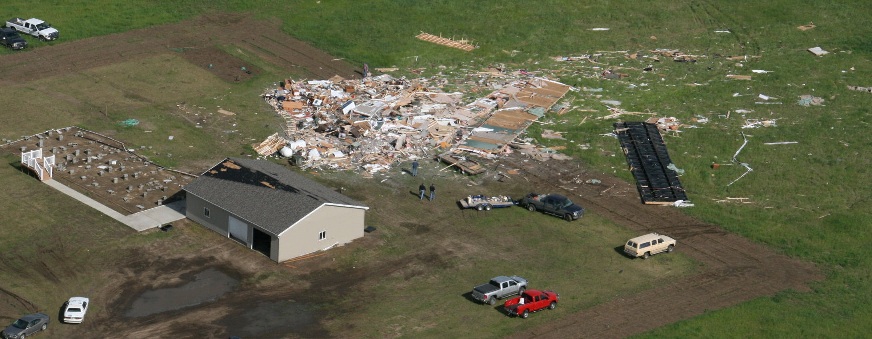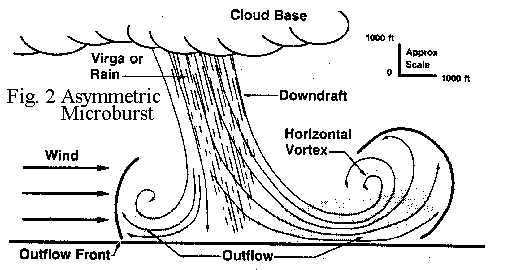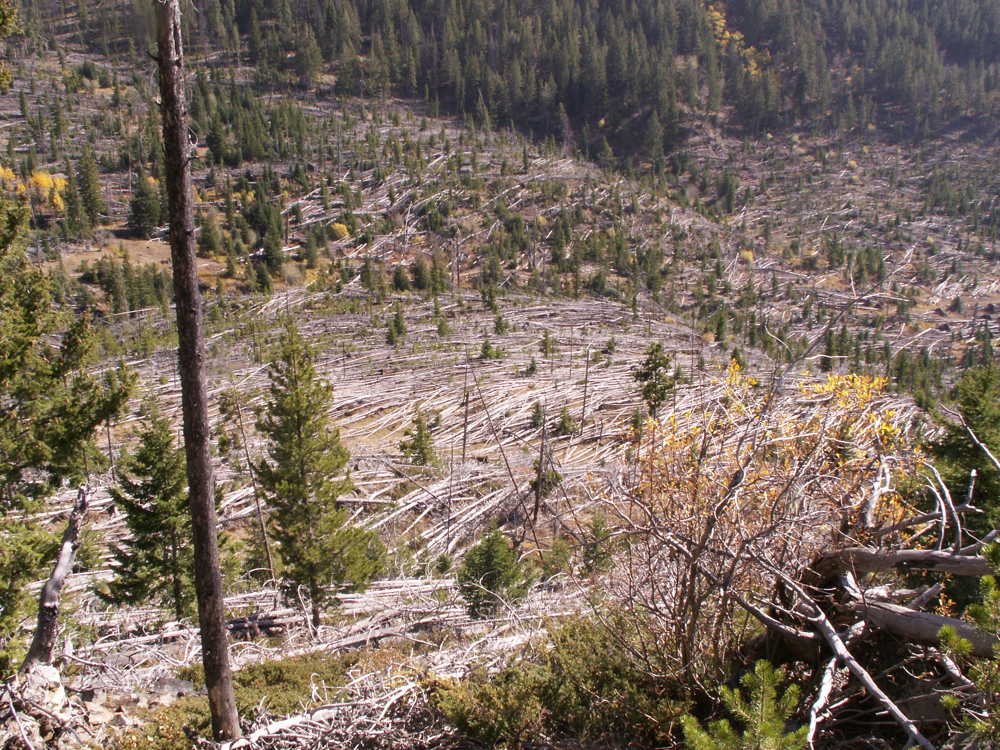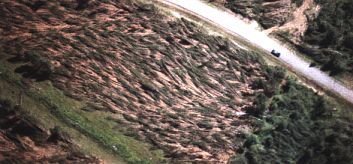

|
Photo courtesy of Tanja Fransen
Although Montana does occasionally experience tornadoes, a more common source of destruction associated with thunderstorms in our state is something called a "downburst" (smaller ones are called "microbursts"). These are exceptionally strong downdrafts that, upon reaching the Earth's surface, diverge horizontally like water streaming from a garden hose nozzle that has been aimed at the ground. Downbursts can occur with or without rain. Their straight-line winds can blow down trees, flatten crops, and destroy buildings. Sometimes downburst damage is wrongly blamed on an unseen tornado. The photo above shows damage at Culberston High School caused by a downburst that swept through northeastern Montana on July 15, 2005. This downburst had a swath of destruction that measured 50-by-20 miles

Photo courtesy Tracy O'Connor, Poplar Airport Manager Deadly Microburst of 2010 . . . Experts estimate wind speeds needed to cause such destruction were in the 110 to 125 mph range. Unlike the 2005 storm that affected Culbertson, the worst damage from this event was isolated to a small area east of Froid. Neighboring farms had no significant or obvious damage. According to Tanja Fransen of the National Weather Service Forecast Office in Glasgow, microburst winds of 50-70 mph occur between 10 to 15 times a year in eastern Montana, with more devastating winds occurring once or twice a year. However, these usually go unnoticed due to the rural nature of the region. . . There simply aren't many people or buildings in this part of the state. Understanding downbursts and microbursts is "no sweat". . . Watch the "Latent Heat Captured on Video" to see how a phase change can release heat.

The smaller ones can be more dangerous
. . . Click here to watch a 42-second video called "The Microburst Demonstration".
Patterns of destruction . . . Below: This photo, taken 20 miles north of Butte, shows trees that were blown down by a microburst that occurred in 1999. To see more photos of this area CLICK HERE.
 Below: Check out this video of a microburst that happened near Tucson, Arizona in the summer of 2015.
1. Fujita came to the USA because he was fascinated with tornadoes. Among other things he developed the Fujita scale for rating tornadoes based on the damage they cause. The F in F-5 stands for Fujita. 2. Fujita's discovery of downbursts changed the way pilots land planes in the presence of thunderstorms. These changes have probably saved thousands of lives. 3. With some thunderstorms you may notice that the rain isn't making it all the way to the ground. This rain that falls, but evaporates before reaching the ground, is called virga.
Macroburst . . . Term: virga |

Below: This photo, taken by Dr.
Ted Fujita, shows the type of
straight-line wind damage caused by a
microburst that hit the ground at an angle.
The trees are laid out neatly in one direction
rather than in a starburst pattern. The photo
was not taken in Montana. |